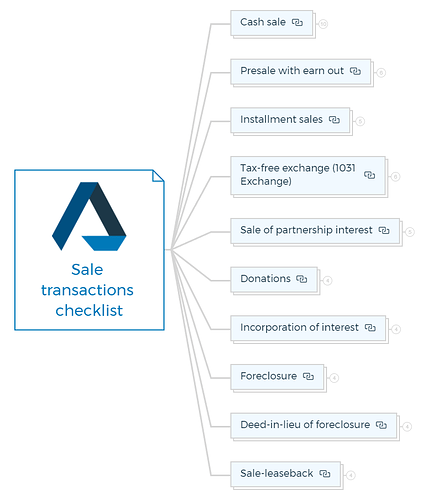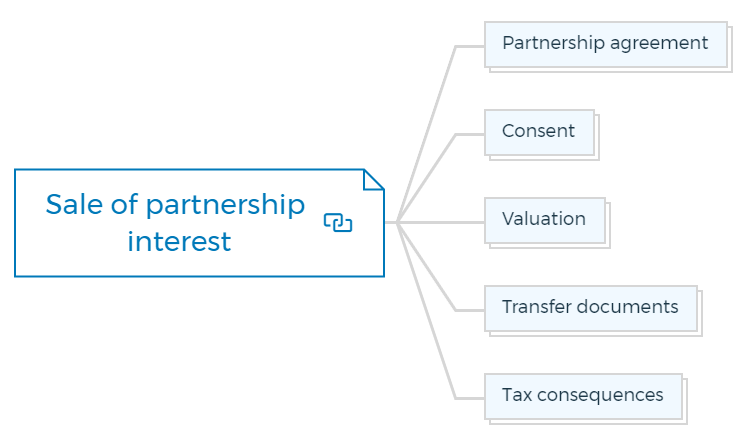1. Cash sale
1.1. Property valuation
Determine the fair market value of the property.
1.2. Title search
Perform a thorough title search to ensure clear ownership.
1.3. Negotiation
Negotiate the sale price and terms with the buyer.
1.4. Contract preparation
Draft a purchase and sale agreement outlining the terms.
Learn More
1.5. Due diligence
Complete property inspections and investigations.
1.6. Financing verification
Ensure the buyer has the necessary funds for a cash transaction.
1.7. Closing process
Coordinate the closing process with all parties involved.
1.8. Escrow account
Establish an escrow account for funds handling.
1.9. Closing costs
Calculate and allocate closing costs.
1.10. Transfer of title
Execute the deed transfer and record it with the appropriate authorities.
2. Presale with earn out
2.1. Earn out agreement
Draft a detailed earn-out agreement specifying conditions.
2.2. Valuation metrics
Define the metrics that trigger earn-out payments.
2.3. Legal review
Consult with legal counsel to ensure compliance.
2.4. Due diligence
Conduct thorough due diligence on the buyer.
2.5. Escrow agreement
Create an escrow agreement for earn-out funds.
2.6. Reporting mechanism
Establish a reporting mechanism for earnings tracking.
3. Installment sales

3.1. Contract terms
Clearly outline the installment terms in the sales agreement.
3.2. Payment schedule
Create a payment schedule with due dates.
3.3. Interest rate
Determine the interest rate (if any) on the installments.
3.4. Default provisions
Specify default provisions and remedies.
3.5. Legal compliance
Ensure compliance with installment sale regulations.
4. Tax-free exchange (1031 Exchange)
4.1. Qualified intermediary
Select a qualified intermediary to facilitate the exchange.
4.2. Identification period
Adhere to the 45-day identification period.
4.3. Purchase timeline
Complete the acquisition of the replacement property within 180 days.
4.4. Qualified property
Ensure the replacement property meets IRS requirements.
4.5. Tax advisors
Consult with tax professionals for guidance.
4.6. Documentation
Properly document the exchange process.
5. Sale of partnership interest
5.1. Partnership agreement
Review the partnership agreement for sale provisions.
5.2. Consent
Obtain consent from other partners if required.
5.3. Valuation
Determine the fair market value of the partnership interest.
5.4. Transfer documents
Prepare the necessary transfer documents.
5.5. Tax consequences
Assess the tax implications for both the seller and buyer.
6. Donations
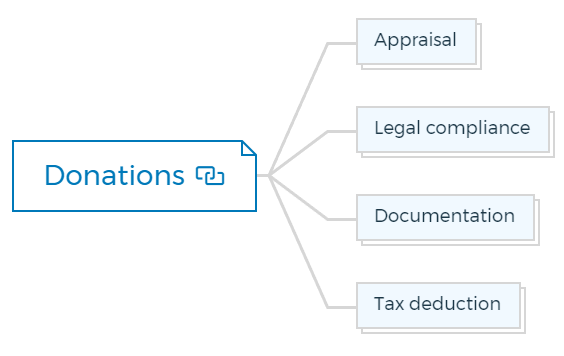
6.1. Appraisal
Obtain a qualified appraisal for the property’s value.
6.2. Legal compliance
Ensure compliance with IRS regulations for charitable donations.
6.3. Documentation
Maintain records of the donation for tax purposes.
6.4. Tax deduction
Verify eligibility for tax deductions.
7. Incorporation of interest
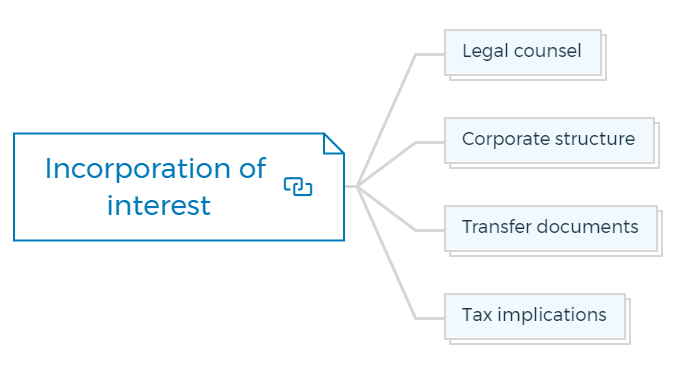
7.1. Legal counsel
Consult with legal counsel regarding incorporation.
7.2. Corporate structure
Choose an appropriate corporate structure.
7.3. Transfer documents
Prepare the necessary transfer documents.
7.4. Tax implications
Consider the tax implications of incorporation.
8. Foreclosure
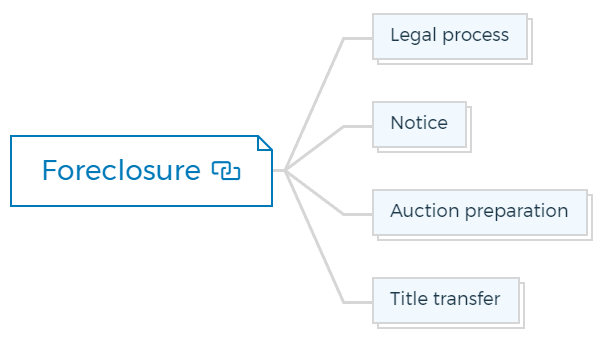
8.1. Legal process
Understand the foreclosure process in your jurisdiction.
8.2. Notice
Provide required notices to the defaulting party.
8.3. Auction preparation
If necessary, prepare for a foreclosure auction.
8.4. Title transfer
Ensure clear title transfer upon successful foreclosure.
9. Deed-in-lieu of foreclosure

9.1. Negotiation
Negotiate with the defaulting party for a voluntary transfer.
Learn More
9.2. Title search
Perform a title search to verify ownership.
9.3. Document agreement
Prepare a deed-in-lieu agreement.
9.4. Legal review
Consult legal counsel to ensure compliance.
10. Sale-leaseback
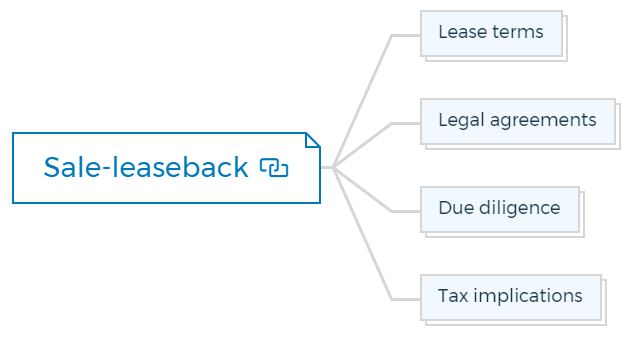
10.1. Lease terms
Establish lease terms and rental rates.
10.2. Legal agreements
Draft a sale-leaseback agreement.
10.3. Due diligence
Conduct due diligence on the buyer/tenant.
10.4. Tax implications
Assess the tax consequences of the sale-leaseback arrangement.

